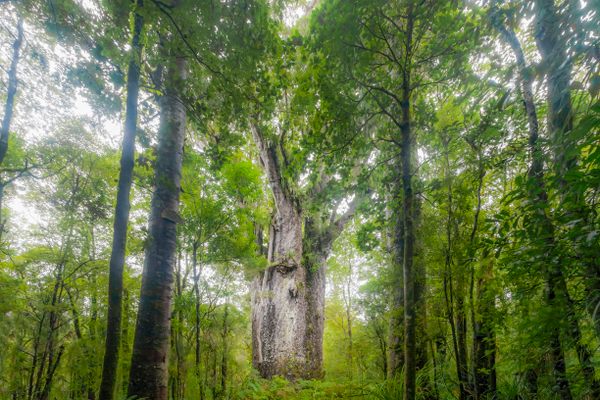Wonder Is Everywhere: The Defender of Time, a Plan to Bomb the Moon, and More From Around the Web
Get a peek into what we’re obsessed with right now.
Wonder is everywhere. That’s why, every other week, Atlas Obscura drags you down some of the rabbit holes we encounter as we search for our unusual stories. We highlight surprising finds, great writing, and inspiring stories from some of our favorite publications.

Which Spot on the Earth Best Represents Humans’ Effect on the Planet?
by Christian Schwägerl, Yale Environment 360
Before Earth’s next geological epoch is official, the International Union of Geological Sciences must pick a location that best captures the start of the Anthropocene, the age of human-caused changes to the planet that dates to the 1950s. As with other geological epochs, a “golden spike” will be used to mark the spot—perhaps a peat bog in Poland, a man-made lake in California, or a water-filled volcanic crater in China.
When X Doesn’t Mark the Spot
by
Earlier this year, a World War II–era treasure map went viral, drawing fortune seekers to Ommeren, Netherlands, in search of a cache of jewelry buried by Nazi troops in 1944. Now an officially sanctioned dig has failed to unearth evidence of hidden gold and jewels—to the relief of many locals, who hope treasure hunters will stop tramping through their town.
The Top-Secret Plan to Bomb the Moon
by Mark Piesing, BBC Future
In the 1950s, when the United States appeared to be losing the Cold War, a group of scientists at Kirtland Air Force Base in New Mexico conceived of Project A119: a plan to detonate a hydrogen bomb on the Moon to prove the country’s military superiority over the Soviet Union. Today, the details of the aborted project remain shrouded in mystery, but some say the plan was scientifically—if not politically—feasible.

A 1,900-Year-Old Statue of Buddha Discovered in Egypt
by Owen Jarus, LiveScience
Archaeologists call the discovery of a Buddhist statue from the 1st century, in the ancient Egyptian port city of Berenike, “a very exciting find.” Its presence suggests that South Asian merchants settled along the Red Sea in Egypt during Roman times.
More Than 80 Years Later, Searchers Find the Remnants of a Tragic WWII Shipwreck
by Brianna Morris-Grant, Australian Broadcasting Corporation
In 1942, an American submarine sank Montevideo Maru in the South China Sea—unaware that the ship was transporting more than 1,000 Allied prisoners of war, many from Australia. It took more than eight decades for underwater searchers to find the final resting place of the POWs off the coast of Luzon, the largest island in the Philippines, under more than 13,000 feet of water.

How a French Artist Brought a Quirky Sculpture Back to Life
by Alex Greenberger, ARTnews
For years, the elaborate and odd automaton known as Le Défenseur du temps, or The Defender of Time—a clock in which a man with a sword defends himself against a dragon, a rooster, and a crab—sat, unmoving, in a Paris neighborhood. In 2022, the sculpture was removed for restoration, and now, finally, the battle has recommenced in the Quartier de l’Horloge (Neighborhood of the Clock), every hour, on the hour, from 9 a.m. to 10 p.m.
The Past—and Future—of the Smithsonian Carousel
by Beth Py-Lieberman, Smithsonian Magazine
When the Smithsonian first installed a carousel on the National Mall in Washington, D.C., in 1967, the amusement “disturb[ed] some people,” The New York Times reported. But quickly the storied merry-go-round became a beloved landmark for both locals and tourists. Until last week, that is, when it was disassembled for restoration. Look for the horses—and the ride’s iconic sea dragon—back on the Mall in fall 2025.






















































Follow us on Twitter to get the latest on the world's hidden wonders.
Like us on Facebook to get the latest on the world's hidden wonders.
Follow us on Twitter Like us on Facebook